Have you ever wanted to learn more about the fascinating world of UK moths? Moth identification, behaviour, conservation and watching gear can all help us become better informed on these amazing creatures. With a few simple tips for moth gardening too, there is plenty to discover when it comes to our native species. Whether you are an amateur or expert in wildlife observation, come join us as we explore the secrets of common moths in the UK.
13 Common UK Moths
Moth Identification is an important part of understanding the behaviour and conservation of these fascinating creatures. Knowing what type of moth you are looking at can help to better understand their habits, habitats, and even how they interact with other species. Here are 13 common moths found in the UK that you may encounter:
Elephant Hawk-Moth
These large UK moths have a wingspan up to 10cm long and feature greyish-brown forewings with pink hindwings. The elephant hawk-moth is often seen flying around gardens during summer months in search of nectar from flowers such as honeysuckle or buddleia.
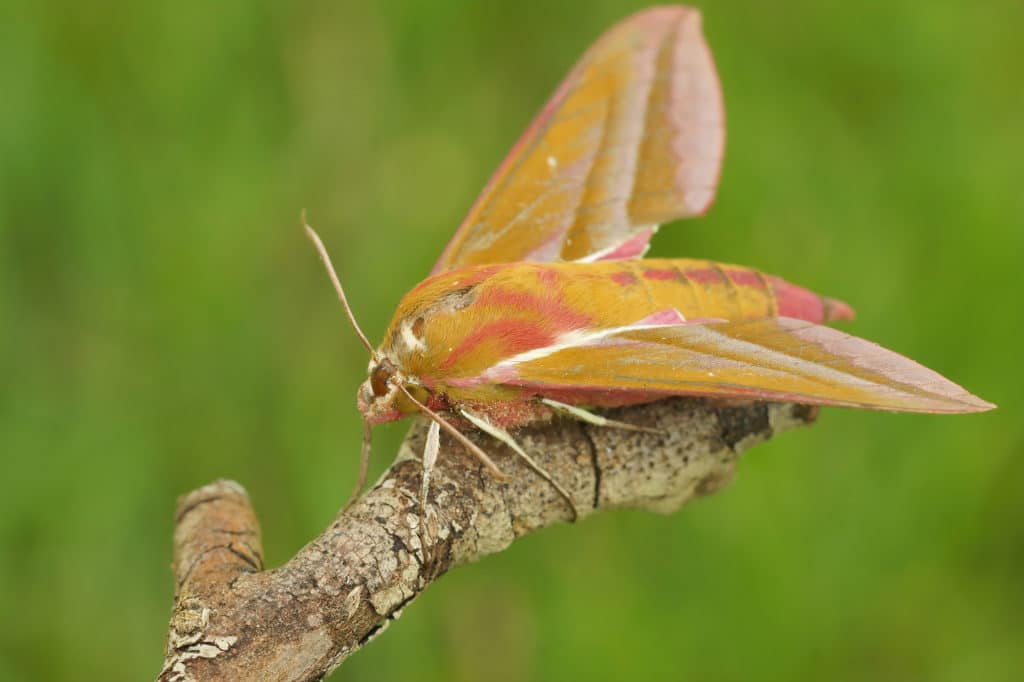
Hummingbird Hawk-Moth
The medium-sized hummingbird hawk-moth has a wingspan up to 7cm long and features pale yellowish green forewings with dark spots on its hindwings which resemble those of hummingbirds when it hovers over flowers for nectar feeding.
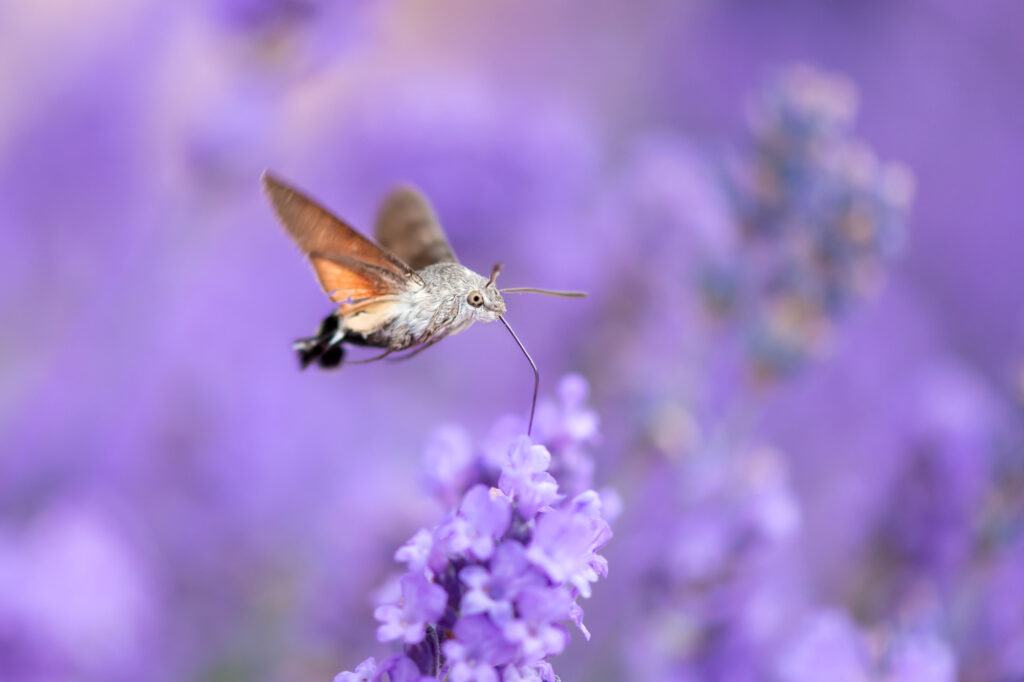
Poplar Hawk-Moth
The poplar hawk-moth has a wingspan of up to 8cm long with greyish brown forewings with white stripes along its body. Also, there are orangey-red hindwing margins bordered by black lines near its edges. Its larvae feed on poplar trees, hence its name.
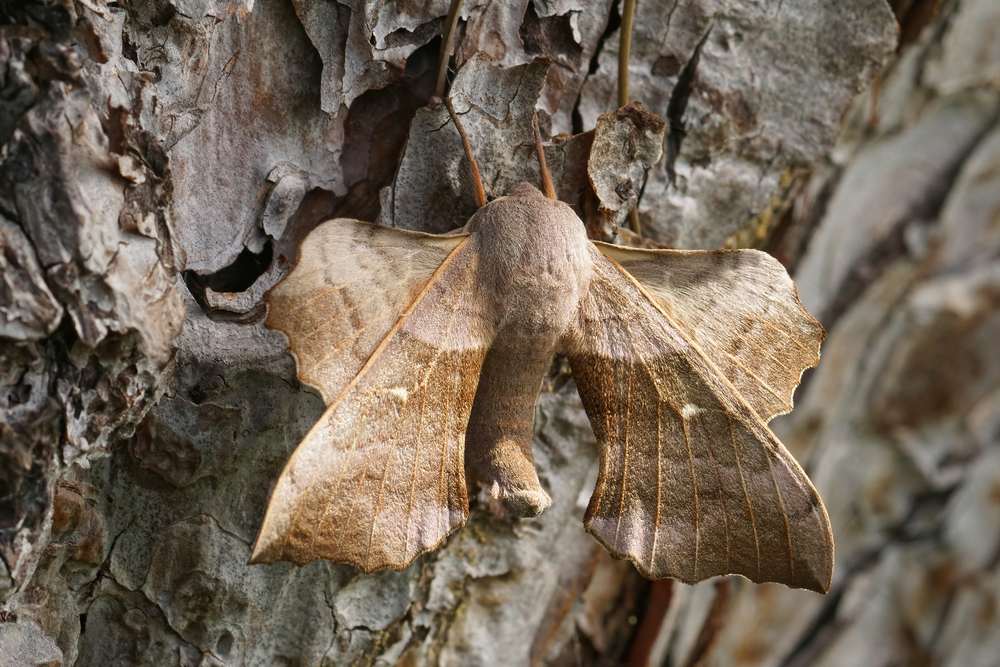
Peppered Moth
This small moth has a wingspan up to 4cm long featuring light grey or beige coloured forewings marked by darker speckles across them both, giving it an overall peppery appearance – hence the name. It feeds mainly on lichens growing on tree trunks but also eats leaves from birch trees too.
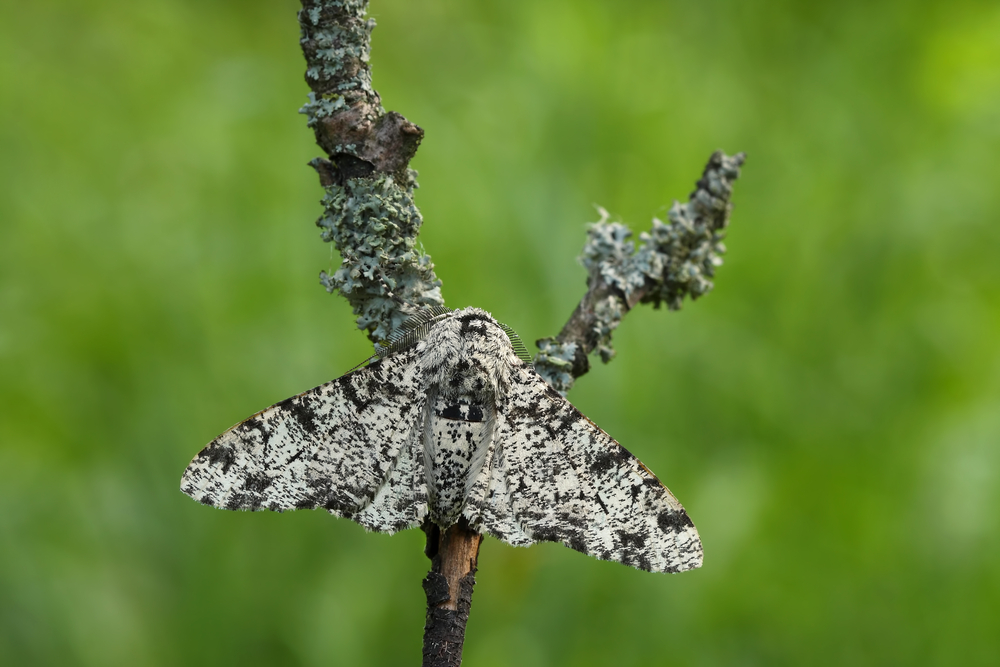
Oak Eggar Moth
This large moth has a wingspan up to 6cm wide, featuring reddish brown coloured front wings marked by darker patches towards the middle while having buff-coloured back wings dotted with black markings. The larvae feed exclusively on oak tree leaves, making this species very dependent upon oaks for survival. However, the moth itself feeds on a variety of plants, such as heather and bilberry. It can be seen throughout much of the British Isles in late spring and summer.
Garden Tiger Moths
Garden tiger moths are medium-sized and have a wing span reaching 7cm wide, displaying bright orange front wings patterned with black wavy lines running through them while sporting creamy white back sides decorated by bold black spots. They can be found in many gardens throughout the UK, where they feed mostly upon plants like nettles, thistles and clovers.
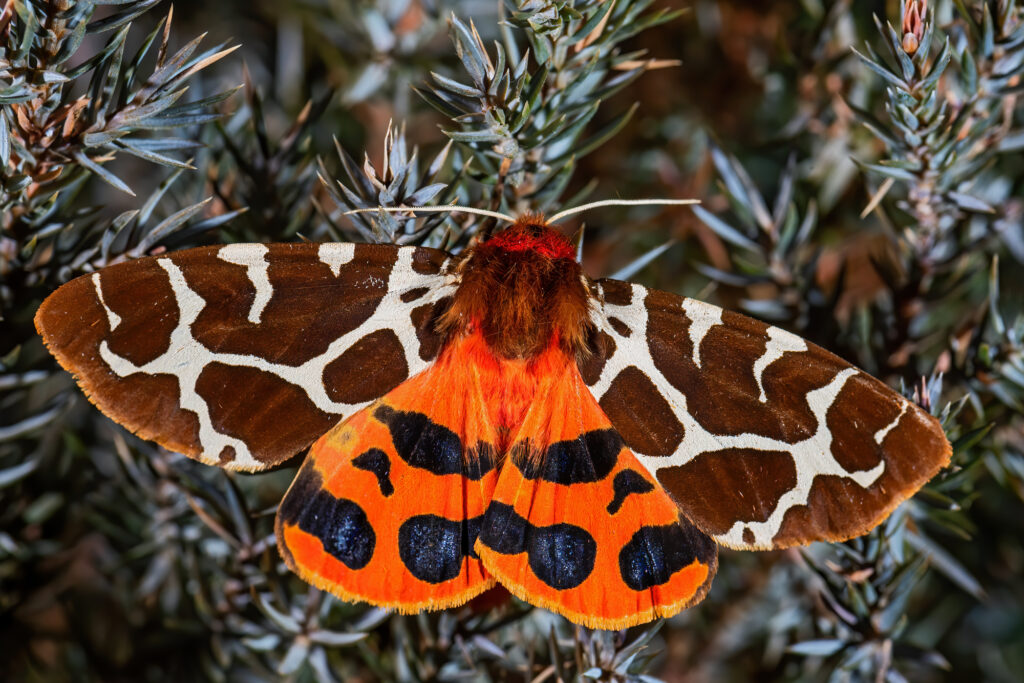
Common Footman Moths
These small moths have a wing span reaching 3cm wide, displaying plain grey front sides decorated only by faint streaks running down each side while having yellowish tan backsides covered in tiny dots all over. They prefer dry grasslands and heaths where they will feast upon various low-lying vegetation such as mosses and lichens.
Buff Ermine Moths
With a small wing span reaching 4cm wide, they feature buff-coloured front sides adorned by thin broken lines running through them while having pure white backsides decorated lightly only around their edges. Their caterpillars usually live inside webs spun amongst hedgerows and scrubland, eating away at various plant materials, including hawthorn berries and ivy leaves.
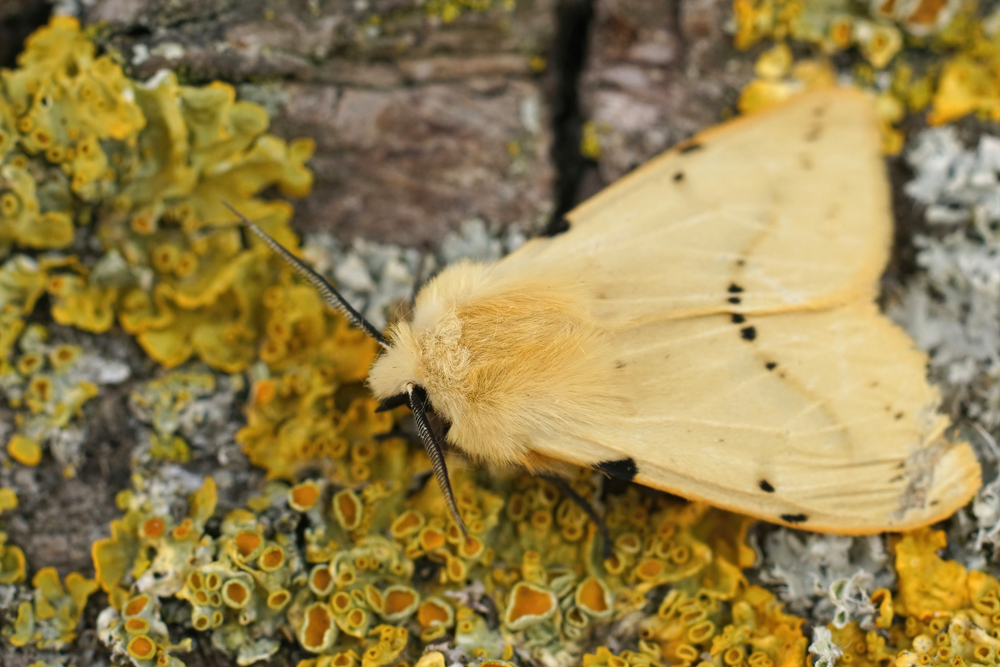
Cinnabar Moths
Cinnabar moths are medium-sized, with a wingspan reaching 5cm wide. They have bright red forewings patterned heavily with thick black stripes along their length, and deep yellow hindwings spotted lightly all over. When fluttering about meadows searching for food sources like ragwort plants, they create quite an eye-catching display.
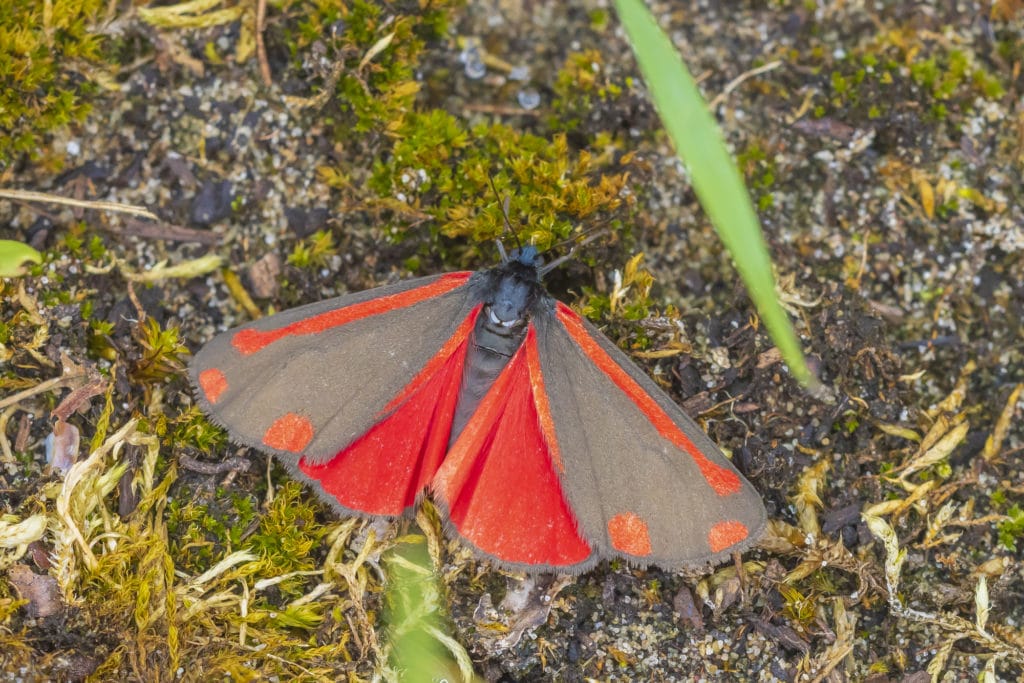
Drinker Moths
Large moths with a wingspan stretching 8cm wide, they exhibit dark chestnut colouring covering most parts except for some lighter shades appearing nearer the tips. Also, they possess pale cream back sides scattered sparsely here and there throughout. This creates quite an attractive look when they are drinking sap from trees late into summer evenings under moonlight skies above woods full of mystery below.
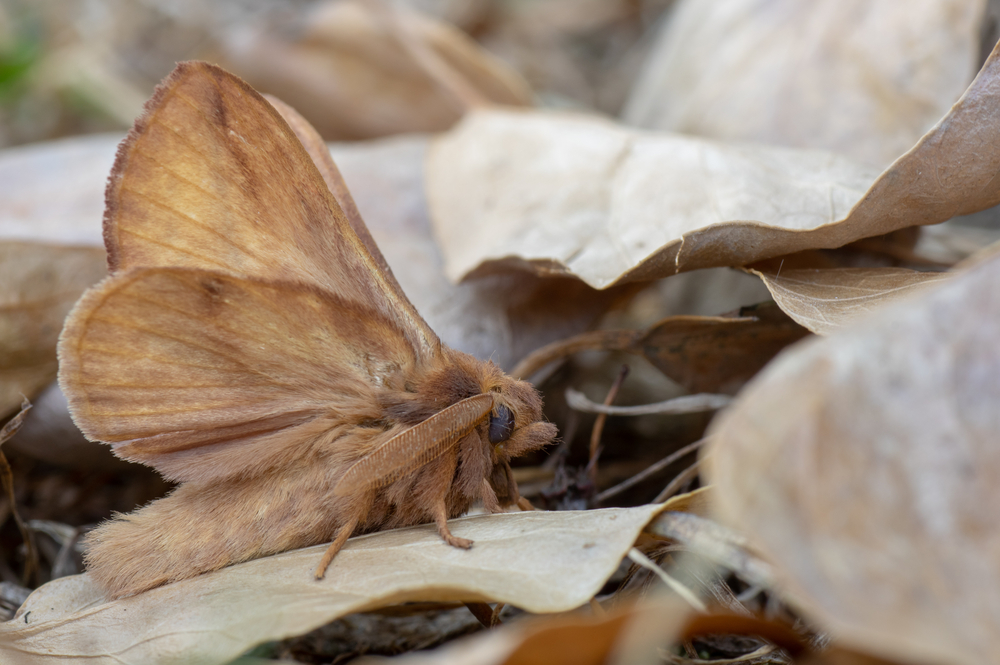
Six-Spot Burnet Moths
These are small moths with a wingspan reaching 2 cm wide. They exhibit deep green forewings marked by bright orange circles near the tips whilst possessing dark brown back sides scattered heavily all over. This creates quite an intricate pattern when flitting around meadows looking for food like grasshoppers and other insect munchables.

Brown Rustic Moths
With a wingspan reaching 5cm wide, brown rustic moths feature reddish brown forewings patterned with lighter stripes running through them while having dull yellow back sides dotted lightly across. This creates quite a striking look when flying about woodlands seeking out nettles, shrubs and other low-lying vegetation for sustenance.
Common Clothes Moth
The most widespread in England is the common clothes moth. It is small, and buff-coloured, with a wingspan of around 12–15mm. The larvae feed on fabrics made from natural materials such as wool, fur and feathers. They are found throughout England and can be seen flying during the summer months.
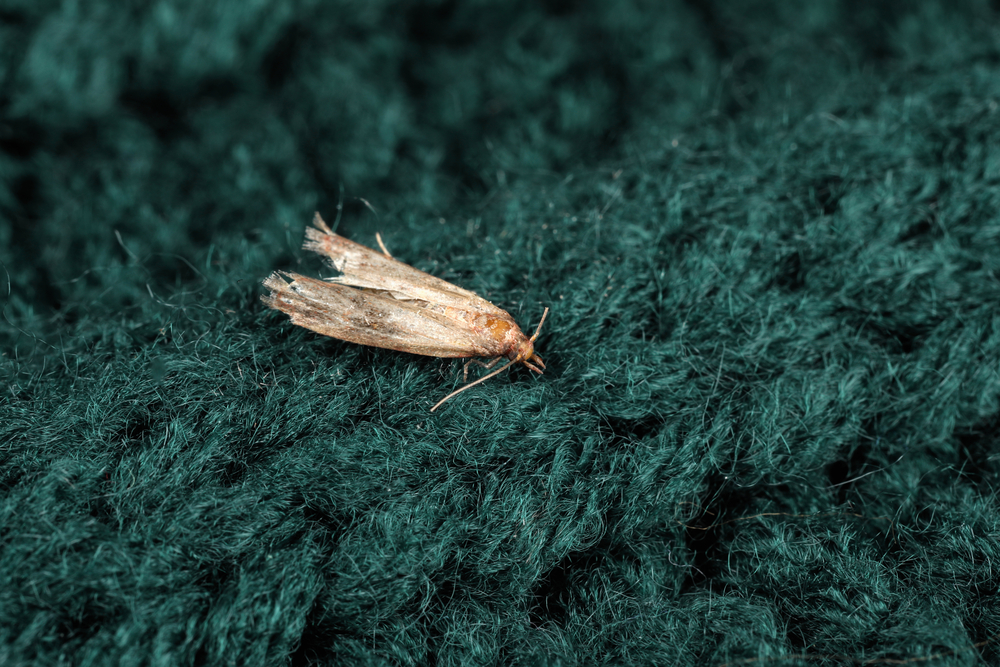
Moth Behavior
Moths are fascinating creatures, and their behaviour is no exception. They have a variety of diets, ranging from nectar to pollen to other insects. Many moths feed on plants or flowers, while others prefer animal proteins such as carrion or dung. Some species of moth even feed on the blood of animals!
Mating habits vary between species but generally involve males searching for females by releasing pheromones into the air. Once a female has been located, mating usually takes place in flight and can last anywhere from several minutes to hours, depending on the species.
When it comes to migration patterns, many moths migrate seasonally, like birds do, in order to find food sources that may not be available during certain times of the year. For example, some species will fly south during winter months when temperatures drop too low for them to survive in their native habitats. Others may travel great distances over land or sea in search of more favourable conditions elsewhere.
Finally, many moths rely heavily on camouflage as a defence mechanism against predators; they use colouration and patterning that blends into their surroundings so they can remain undetected until the danger passes by safely. This strategy works particularly well at night when light levels are lower, and visibility is reduced significantly compared with daytime hours when predators can easily spot them from afar.
Moth behaviour is an important factor to consider when observing them, and understanding the various behaviours of moths can help us gain insight into their ecology.
Moth Conservation
Moths are an important part of the UK’s biodiversity, playing a vital role in our ecosystems. Unfortunately, many species have declined drastically over recent decades due to habitat loss and climate change. It is, therefore, essential that we take action to protect these creatures from further decline.
One way individuals can help conserve moths is by creating or enhancing habitats for them in their gardens or local green spaces. This could involve planting native trees and shrubs which provide food sources such as nectar and pollen for adult moths, as well as providing shelter for larvae and pupae stages of their life cycle. Additionally, leaving some areas uncut with long grasses can also be beneficial to moth populations.
Reducing light pollution can also benefit moth populations by encouraging more adults to emerge at night when they are most active. This involves switching off outdoor lights when not needed or using low-glare lighting fixtures which emit less disruptive wavelengths of light.
Finally, individuals should consider participating in citizen science projects such as the National Moth Recording Scheme (NMRS), which collects data on moth sightings across the country. This helps us better understand how different species are faring so that appropriate conservation measures can be taken where necessary.
Moth Watching Gear
Watching moths can be a wonderful experience, especially when done properly with the correct gear.
Binoculars
Binoculars are essential for any wildlife enthusiast, and they can be especially useful when it comes to observing moths. A good pair of low-light binoculars will allow you to get a closer look at the moths without disturbing them. They also make it easier to identify different species from afar. When choosing binoculars for moth watching, consider factors such as magnification power, size and weight, field of view, and image quality.
Flashlights
Flashlights are another important tool for moth watchers since many species are nocturnal or crepuscular in nature. A flashlight with a red light is ideal because it won’t disturb the moths while still providing enough illumination so that you can see them clearly in the dark. Look for flashlights that have adjustable brightness settings so that you can adjust the intensity depending on your needs.
Field Guides
Field guides provide an invaluable resource when trying to identify different types of moths in their natural environment. There are several excellent field guides available which include detailed descriptions and photographs of various species along with information about their habitats and behaviours. It is important to choose one that covers all the areas where you plan on doing your research so that you do not miss out on any potential sightings.
How To Attract Moths To Your Garden

Creating a garden that attracts moths is an exciting way to observe these fascinating creatures up close. Here are some tips on how to create the perfect moth-friendly environment in your own backyard.
Plants
Planting a variety of native plants will provide food sources for moths, such as nectar and pollen. Wildflowers, shrubs, trees and herbs are all great options. For example, honeysuckle is a popular choice among many species of moths because it provides them with both nectar and shelter from predators.
Food Sources
Moths also need access to other food sources like sap or fruit juices so they can get the nutrients they need to survive and reproduce. You can provide this by placing overripe fruits near your garden or setting out shallow dishes filled with sugar water or molasses at night when most moths come out to feed.
Shelter
Providing shelter for moths is essential if you want them to stay in your garden for long periods of time rather than just passing through quickly during their migration season. Installing birdhouses around your property can give them somewhere safe and secure where they can rest during the day before emerging again at nightfall when temperatures cool down enough for them to be active again.
Avoid using bright lights near areas where you’ve seen moths gathering. This could disrupt their natural behaviour patterns and make it difficult for them to find food sources or mates in the dark hours of the night. Instead, opt for dimmer lighting that won’t attract too much attention but still allow you to see what’s going on in your garden without disturbing its inhabitants too much.
By following these tips, you can help create a thriving environment for moths in your garden and give yourself the opportunity to observe them up close.
Conclusion
In conclusion, UK moths are an important part of the natural environment and should be protected. With the right knowledge and gear, you can observe these fascinating creatures in their natural habitat. By learning more about moth identification, behaviour, conservation and gardening tips, you can help protect them for future generations to enjoy.
Additional Resources
Sources and References
- Beginner’s Top 20 – ukmoths.org.uk
- The NHBS Guide to Common UK Moth Identification – nhbs.com

Ash is a contributing author who has been writing about wildlife for as long as he can remember. He has a vast knowledge of many different types of animals, from the tiniest shrews to the great whales that live in the deepest oceans.
